Hyundai i10 vs Renault Symbioz – Differences & prices compared
Compare performance, boot space, consumption and price in one view.
Find out now: which car is the better choice for you – Hyundai i10 or Renault Symbioz?
The Hyundai i10 (Hatchback) comes with a Petrol engine and Manuel or Automatic transmission. In comparison, the Renault Symbioz (SUV) features a Petrol MHEV or Full Hybrid engine with Manuel or Automatic transmission.
When it comes to boot capacity, the Hyundai i10 offers 252 L, while the Renault Symbioz provides 576 L – depending on how much space you need. If you’re looking for more power, decide whether the 90 HP of the Hyundai i10 or the 158 HP of the Renault Symbioz suits your needs better.
In terms of consumption, the values are 4.90 L per 100 km for the Hyundai i10, and 4.50 L for the Renault Symbioz.
Price-wise, the Hyundai i10 starts at 14600 £, while the Renault Symbioz is available from 24400 £. Compare all the details and find out which model fits your lifestyle best!
Hyundai i10
The Hyundai i10 impresses with its compact design, making it an ideal choice for navigating through busy urban environments. Its interior is surprisingly spacious, offering drivers and passengers comfort beyond what one might expect from a city car. The model combines efficiency and practicality, making it an attractive option for those seeking both economy and functionality in their daily commute.
details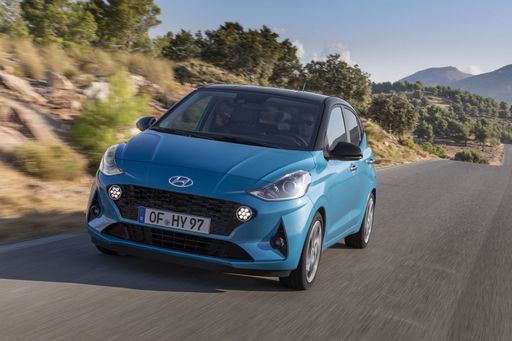 @ hyundai.news
@ hyundai.news
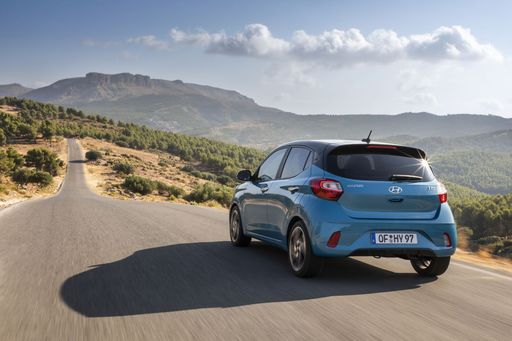 @ hyundai.news
@ hyundai.news
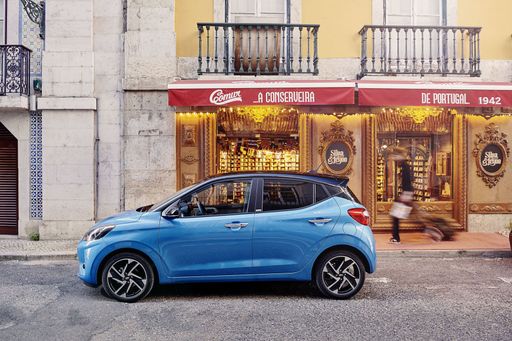 @ hyundai.news
@ hyundai.news
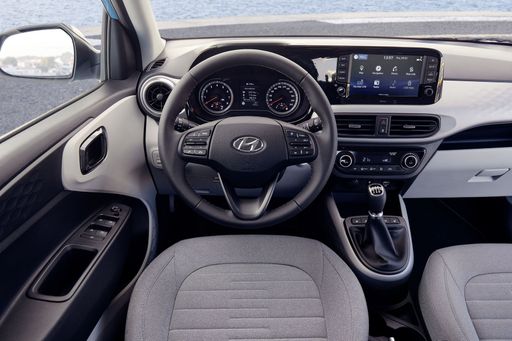 @ hyundai.news
@ hyundai.news
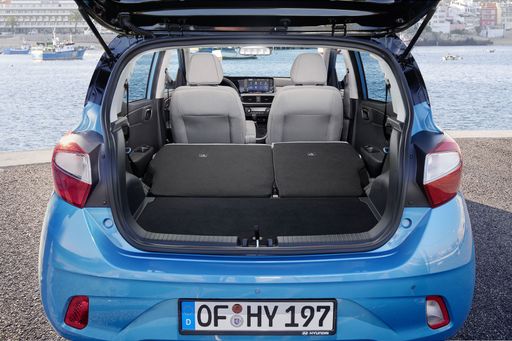 @ hyundai.news
@ hyundai.news
Renault Symbioz
The Renault Symbioz is an innovative concept car that explores the future of autonomous and connected driving. Its design seamlessly integrates indoor living space features with cutting-edge automotive technology, creating a comfortable and modern environment. The Symbioz highlights Renault's vision of an eco-friendly and connected mobility experience, paving the way for the next generation of smart vehicles.
details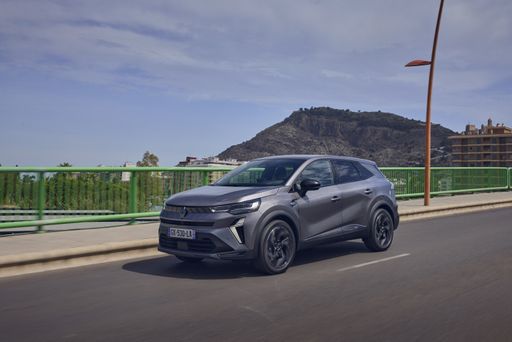 @ media.renault.at
@ media.renault.at
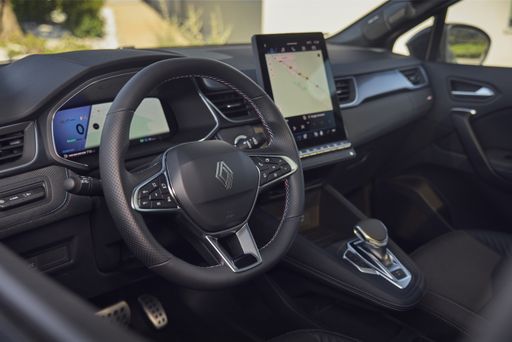 @ media.renault.at
@ media.renault.at
 @ media.renault.at
@ media.renault.at

|

|
|
|
|
Costs and Consumption |
|
|---|---|
|
Price
14600 - 19000 £
|
Price
24400 - 30700 £
|
|
Consumption L/100km
4.9 - 5.5 L
|
Consumption L/100km
4.5 - 5.9 L
|
|
Consumption kWh/100km
-
|
Consumption kWh/100km
-
|
|
Electric Range
-
|
Electric Range
-
|
|
Battery Capacity
-
|
Battery Capacity
-
|
|
co2
110 - 124 g/km
|
co2
102 - 134 g/km
|
|
Fuel tank capacity
36 L
|
Fuel tank capacity
48 L
|
Dimensions and Body |
|
|---|---|
|
Body Type
Hatchback
|
Body Type
SUV
|
|
Seats
4 - 5
|
Seats
5
|
|
Doors
5
|
Doors
5
|
|
Curb weight
996 - 1099 kg
|
Curb weight
1436 - 1544 kg
|
|
Trunk capacity
252 L
|
Trunk capacity
492 - 576 L
|
|
Length
3670 - 3675 mm
|
Length
4413 mm
|
|
Width
1680 mm
|
Width
1797 mm
|
|
Height
1480 - 1483 mm
|
Height
1575 mm
|
|
Payload
344 - 423 kg
|
Payload
376 - 379 kg
|
Engine and Performance |
|
|---|---|
|
Engine Type
Petrol
|
Engine Type
Petrol MHEV, Full Hybrid
|
|
Transmission
Manuel, Automatic
|
Transmission
Manuel, Automatic
|
|
Transmission Detail
Manual Gearbox, Automated Manual
|
Transmission Detail
Manual Gearbox, Automatic Gearbox
|
|
Drive Type
Front-Wheel Drive
|
Drive Type
Front-Wheel Drive
|
|
Power HP
63 - 90 HP
|
Power HP
140 - 158 HP
|
|
Acceleration 0-100km/h
11.4 - 18.4 s
|
Acceleration 0-100km/h
9.1 - 11.2 s
|
|
Max Speed
143 - 175 km/h
|
Max Speed
180 km/h
|
|
Torque
93 - 172 Nm
|
Torque
250 - 265 Nm
|
|
Number of Cylinders
3 - 4
|
Number of Cylinders
4
|
|
Power kW
46 - 66 kW
|
Power kW
103 - 116 kW
|
|
Engine capacity
998 - 1197 cm3
|
Engine capacity
1333 - 1789 cm3
|
General |
|
|---|---|
|
Model Year
2024
|
Model Year
2025
|
|
CO2 Efficiency Class
C, D
|
CO2 Efficiency Class
D, C
|
|
Brand
Hyundai
|
Brand
Renault
|
Hyundai i10
Introduction to the Hyundai i10
The Hyundai i10 has consistently proven to be a dependable and stylish companion for urban driving. Known for its compact design and efficiency, this hatchback offers a perfect blend of modern aesthetics and practicality, making it a popular choice for city dwellers and small families alike.
Performance and Efficiency
The Hyundai i10 is available with both manual and automatic transmissions, catering to various driving preferences. Engine power ranges from 63 to 90 PS, providing a versatile driving experience for both novice and seasoned drivers. The fuel consumption varies between an impressive 4.9 to 5.4 litres per 100 kilometres, fitting for those looking to minimise fuel costs while also reducing their carbon footprint.
Engine and Transmission
Equipped with a choice of 1.0-litre or 1.2-litre engines, the i10 offers up to 172 Nm of torque, ensuring lively performance. The models feature front-wheel-drive configurations, allowing for smooth handling and reliable road performance. The car excels in city driving but is equally capable on longer journeys.
Interior and Comfort
Despite its compact size, the Hyundai i10 does not compromise on interior space and comfort. It accommodates four to five occupants comfortably, offering sufficient legroom and headroom. Its flexible seating arrangement and a 252-litre boot make it ideal for both quick trips and weekend getaways.
Safety and Technology
Safety remains a priority with Hyundai, and the i10 is no exception. It comes equipped with multiple airbags, stability control, and advanced braking systems. Technology-wise, the i10 features a user-friendly infotainment system with smartphone connectivity, ensuring a pleasant and connected drive.
Design and Style
The Hyundai i10’s design is both modern and sleek, making it stand out in the compact hatchback segment. With a length ranging from 3670 to 3675 mm, a width of 1680 mm, and a height of 1480 to 1483 mm, the i10 strikes a perfect balance between style and functionality.
Affordable Pricing and Value
The i10 is available in several trims including the Select, N Line, and Prime, among others, with prices ranging from €16,990 to €22,190. Considering its features and low running costs — with monthly expenses estimated between €694 to €793 — the Hyundai i10 offers substantial value for those seeking an economical yet stylish hatchback.
Conclusion
The Hyundai i10 combines efficiency, modern design, and practicality in a compact package. Whether you are seeking a reliable city car or an economical daily driver, the Hyundai i10 is a strong contender worth considering in the compact car market of 2024.
Renault Symbioz
Discover the Future: The Renault Symbioz
As we transition into a new era of automotive technology, the Renault Symbioz stands as a beacon of innovation and sustainability. Designed with the modern driver in mind, this SUV redefines what it means to integrate elegant design with cutting-edge technology. Delve into the details of this impressive vehicle and see what sets it apart from the competition.
Unveiling Its Power: Hybrid Engine and Performance
At the heart of the Renault Symbioz is a full hybrid powertrain that combines efficiency with performance. The 143 PS engine, delivering 105 kW, ensures a smooth and responsive driving experience. Coupled with a front-wheel-drive automatic transmission, the Symbioz offers remarkable fuel economy at just 4.8 L/100 km, making it a top contender in the eco-friendly vehicle market.
Innovation Meets Design: Aesthetics and Aerodynamics
With dimensions measuring 4413 mm in length, 1797 mm in width, and 1575 mm in height, the Symbioz presents a striking and sleek profile. The vehicle marries form and function perfectly, enhancing aerodynamics while maintaining a comfortable and spacious interior. Its lightweight build, with a gross weight of 1498 kg, complements its agile handling and stability on the road.
Interior Elegance and Technology
The Renault Symbioz is not only about performance but also about offering a refined driving experience. The interior is meticulously designed to provide comfort for up to five occupants, boasting a generous boot space of 492 litres. High-quality materials and advanced infotainment systems enhance the driving experience, incorporating state-of-the-art technology seamlessly.
Bridging Sustainability and Performance
With CO2 emissions of 109 g/km and a CO2 efficiency class of C, the Renault Symbioz aims to reduce environmental impact without compromising on performance. Its 1.6-litre engine, composed of three cylinders, delivers a perfect synergy of power and efficiency, showcasing Renault’s commitment to innovative, responsible motoring.
Optional Trims: Tailoring to Your Preferences
Available in three distinct trim levels—Esprit Alpine, Iconic, and Techno—the Symbioz allows customers to customise their driving experience further. Each comes equipped with multi-mode automatic transmission options that cater to various driving styles, ensuring a tailored approach to modern driving needs.
Price and Availability
The Renault Symbioz is competitively priced, ranging between €32,550 and €35,450, depending on the selected trim. With its advanced features and cutting-edge technology, this vehicle provides significant value in the current automotive market.
Conclusion: A Vision of Tomorrow, Today
The Renault Symbioz is not just an SUV; it represents a commitment to a sustainable and technologically advanced future. By marrying superior performance with eco-conscious engineering, Renault has set a new benchmark in the automotive industry. The Symbioz is poised to captivate drivers around the world, embodying a seamless blend of innovation, efficiency, and style.
The prices and data displayed are estimates based on German list prices and may vary by country. This information is not legally binding.
